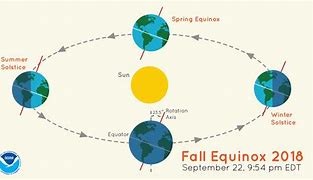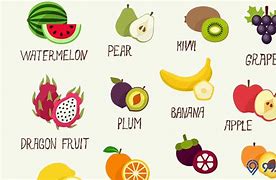Autumnal Equinox Adalah

From Wikipedia, the free encyclopedia
Autumnal equinox or variations, may refer to:
Topics referred to by the same term
Đăng ký thành công, vui lòng đăng nhập
From Wikipedia, the free encyclopedia
Public holiday in Japan
This article is about the Japanese holiday. For the general topic, see
Autumnal Equinox Day (秋分の日, Shūbun no Hi) is a public holiday in Japan that usually occurs on September 22 or 23, the date of Southward equinox in Japan Standard Time (autumnal equinox can occur on different dates for different time zones). Due to the necessity of recent astronomical measurements, the date of the holiday is not officially declared until February of the previous year. Autumnal Equinox Day became a public holiday in 1948. In 1947 and before, it was the date of Shūki kōreisai (秋季皇霊祭), an event relating to Shinto. Like other holidays, this holiday was repackaged as a non-religious holiday for the sake of separation of religion and state in Japan's postwar constitution.
Five Seasonal Foods to Enjoy on Autumnal Equinox Day
While おはぎ (ohagi) is a representative food for Autumnal Equinox Day, other seasonal foods are also incorporated into the celebrations in various regions. Here are five notable foods to enjoy:
おはぎ (Ohagi): A traditional offering for ancestor worship, ohagi are sweet rice cakes with red bean paste. This practice began in the Edo period, and ohagi is often made with adzuki beans, which are in season in autumn. It’s believed that adzuki beans have the power to ward off evil spirits.
里芋 (Satoimo): These autumnal root vegetables symbolize a good harvest and family prosperity, making them a popular offering. In some regions, mashed satoimo is added to rice to enhance its stickiness.
舞茸 (Maitake): This mushroom, known for its delicate flavor and aroma, is named for its appearance that resembles dancing. It pairs well with many dishes, including tempura and stir-fries.
サンマ (Sanma): Known as mackerel pike, sanma is a seasonal fish in autumn. It is delicious grilled with salt but can also be enjoyed in other preparations like tatsuta-age (deep-fried) or kabayaki (grilled with sauce). Autumn events like the Meguro Sanma Festival in Tokyo celebrate this fish.
Additionally, there are customs associated with other autumnal events like the moon-viewing festival, where seasonal foods and offerings are also enjoyed.
Get 20% off all subscriptions. Use the code YUM20 at checkout.
Vernal and Autumnal Equinox Days
Shūnbun no hi (春分の日, Vernal Equinox) and Shūbun no hi (秋分の日, Autumnal Equinox) are significant days in Japanese culture, marking the change of seasons, and are revered with deep respect. These equinoxes are celebrated twice a year, on March 20 or 21 and on September 22 or 23, two moments in the year when day and night are of equal length. These days are official holidays in Japan, during which the Japanese engage in ancient rituals and traditions.
Recent Japanese equinoxes
Past observed and future calculated equinoxes in Japan Standard Time.[1]
On this day, people will reconnect with their families by tending to the graves of ancestors and visiting shrines and temples. People also celebrate the good weather and autumn harvest by enjoying outdoor activities and eating Shūbun no Hi snacks such as botamochi– a ball of sweet rice in azuki paste.
History of the Holidays
In ancient times, the days of the equinoxes were celebrated to thank the spirits of nature for a good harvest and to pray for the fertility of the land. Since the reign of Prince Shōtoku (574-622 CE), the celebration of the equinoxes has taken on a more spiritual significance, with memorial rituals in honour of the deceased, and relatives visiting the graves of their ancestors to pay their respects.
In the Meiji era (1868-1912), the equinoxes were declared public holidays to honour the imperial family's ancestors. A little later, the deceased in general were paid tribute on these days. In addition, the autumnal equinox, Shūbun no hi, marks the end of the harvest and the beginning of preparations for winter.
Higan week, the equinoctial week of spring and autumn, is a poignant period in Japan when families gather to honour their ancestors. During this time, people visit family gravesites, bring flowers, clean the tombs, and perform rituals while making heartfelt offerings. The equinox days fall in the middle of this reflective week, deepening the meaning of the celebrations.
Buddhism teaches that the equinoxes are especially sacred because the worlds of the living and the dead come closer together. According to this belief, the souls of the deceased must cross a bridge over the Sanzu River, a metaphorical stream filled with regret and sorrow. If they can survive the challenges and judgements on their way to their final resting place and successfully cross the river, enlightenment—known as higan—awaits them on the other side. Many people visit Buddhist temples during this time to pray for these souls, often reciting sutras and meditating in quiet.
During higan, meat is typically set aside, and traditional Japanese dishes take centre stage. The emphasis is on healthy meals based on vegetables, beans, mushrooms, and rice. Delicacies such as botamochi (ぼたもち) (for spring) and ohagi (おはぎ) (for autumn), both sweet rice balls coated in red bean paste, are favourite treats during this season.
Hanami and Momijigari
The equinoxes also inspire a deep appreciation for the beauty of nature. The vernal equinox, or Shūnbun no hi, is associated with hanami, where people gather for joyous picnics under blooming cherry trees. In autumn, the focus shifts to momijigari, the observation of vibrant foliage as leaves turn bright red and gold to mark the changing seasons.
Even in today's fast-paced world, Shūnbun no hi and Shūbun no hi provide a treasured opportunity for Japanese people to step back, reflect on their lives, and express gratitude to their ancestors. These holidays serve as a gentle reminder of the cyclical nature of life and promote harmony between past and present.
During this special time, many people return to their roots, visit relatives, explore nature, and spend quality time with their loved ones. It's a wonderful occasion that highlights the importance of spiritual balance and connection with nature.
The vernal and autumnal equinoxes are imbued with deep symbolism, gratitude to nature, and a quest for inner peace and harmony. These celebrations embody the essence of Japanese culture and invite everyone to embrace both reflection and appreciation.
What causes the seasons?In many parts of the world, weather cycles through the four seasons like clockwork: spring, summer, autumn, and winter.(more)
Observatorium Bosscha Institut Teknologi Bandung memprediksi terjadinya ekuinoks antara tanggal 20 - 23 September 2022. Ekuinoks merupakan suatu peristiwa dimana kedudukan matahari tepat berada di khatulistiwa dan sumbu Bumi tegak lurus dengan Matahari. Fenomena ini terjadi dua kali dalam satu tahun, yaitu di bulan Maret yang disebut ekuinoks musim semi (vernal equinox) dan di bulan September yang disebut ekuinoks musim gugur (autumnal equinox). Ekuinoks musim semi juga dikenal sebagai titik Aries karena pertama kali diamati ribuan tahun lalu berada di Rasi Aries. Pada peristiwa ekuinoks menyebabkan lama waktu siang dan malam sama, yaitu selama 12 jam. Peristiwa equinoks ditandai dengan terbenamnya matahari tepat di posisi timur dan terbenam tepat di posisi barat serta bidang khatulistiwa Bumi (ekuator) berada dalam posisi miring terhadap eliptika sebesar 23,4 derajad.
Ekuinoks juga merupakan tanda adanya pergantian musim yang terjadi dua kali dalam setahun, yaitu Maret dan September. Pada Ekuinoks bulan Maret yang disebut sebagai ekuinoks musim semi, merupakan pertanda peralihan musim dari musim hujan ke musim kemarau.Sedangkan ekuinoks yang dipredikasi terjadi pada tanggal 23 September 2022 akan menjadi pertanda dimulainya musim gugur di belahan bumi utara dan musim semi di belahan bumi selatan. Fenomena ekuinoks tidak terjadi sehari penuh, tetapi tepat pada saar matahari sampai pada titik ekuinoks dan melintasi tepat di atas ekuator.
Peristiwa pembiasan atmosfer di daerah khatulistiwa
Meskipun secara harfiah, ekuinoks berarti lama waktu siang dan malam yang sama, tetapi lama waktu siang dan malam tidak benar-benar tepat sama 12 jam. Siang dan malam yang sama panjang akan diperoleh apabila mulainya siang diukur pada saar titik pusat Matahari terbit di horizon dan malam diukur saat pusat matahari terbenar di horizon. Di langit, matahari akan berbentuk piringan dan pengukuran lama waktu siang dimulai pada saat piringan atas Matahari muncul di horizon dan malam dimulai pada saat seluruh piringan Matahari terbenam di horizon. Hal tersebut menyebabkan Bumi akan memiliki durasi terang yang lebih lama daripada durasi gelap pada saat terjadi ekuinoks.
Pada fenomena ekuinoks, di daerah khatulistiwa akan mengalami selisih waktu terbit dan terbenam antara dengan atau tanpa pembiasan atmosfer sebesar 2 menit. Peristiwa ini disebabkan oleh pembiasan atmosfer di ufuk atau cakrawala sebesar 34 menit busur. Pembiasan atmosfer ini mengakibatkan ufuk atau cakrawala akan lebih rendah dibandingkan dengan ufuk atau cakrawala sejati. Hal tersebut akan menyebabkan waktu terbit matahari di daerah khatulistiwa menjadi lebih cepat dibandingkan apabila tidak terjadi pembiasan atmosfer. Hal ini mngakibatkan lama terang lebih lama daripada durasi gelapnya.
Baca konten-konten menarik Kompasiana langsung dari smartphone kamu. Follow channel WhatsApp Kompasiana sekarang di sini: https://whatsapp.com/channel/0029VaYjYaL4Spk7WflFYJ2H
Lihat Ilmu Alam & Tekno Selengkapnya
Autumnal equinox facts and customs
The Harvest Moon is the name given to the full moon that occurs nearest to the autumnal equinox. Historically the light of the Harvest Moon was said to enable farmers to work late into the night, helping them to bring in the crops from the fields. The Harvest Moon usually falls in September.
Saturn also has equinoxes, but because it takes almost 30 years to orbit the Sun, they only happen about every 15 years.
For those located at high northern hemisphere latitudes, the autumnal equinox paves the way for increased chances to see the aurora borealis. According to NASA, the equinoxes are prime time for the Northern Lights, and geomagnetic activities are more likely to take place in the spring and autumn than in the summer or winter.
Mabon is a modern Pagan ritual marking the autumnal equinox. The ritual gives thanks for a plentiful harvest and recognises the need to share the Earth’s fruits in the coming winter months. It is the second of the three Pagan harvest festivals, which include Lammas/Lughnasadh and Samhain.
In Japanese culture, the autumn equinox is celebrated with the tradition of Higan. It is a time to remember deceased relatives, as well as mark the passing of the seasons. Higan officially lasts for seven days, beginning three days prior to the equinox and ending three days after it.
Because of time zone differences, the equinox can be on different days for different locations.
The Autumnal Equinox Day (秋分の日) marks the midpoint of the autumn equinox period, which spans seven days, including three days before and after. On this day, there are customs such as offering おはぎ (ohagi), a traditional sweet, and enjoying seasonal foods. We’ll introduce the origins of Autumnal Equinox Day, the customs of offerings for this time of year.
Autumnal Equinox Day is a national holiday in Japan. The term “秋分” (shūbun) refers to one of the 24 solar terms in the traditional lunisolar calendar, marking the autumn equinox. Other terms in this calendar represent different seasons, such as 春分 (shunbun) for the vernal equinox, 夏至 (geshi) for the summer solstice, and 冬至 (tōji) for the winter solstice. Let’s explore the meaning and origins of Autumnal Equinox Day.
Autumnal Equinox Day occurs in September, but the date varies each year. The date is determined the previous year as it is based on the moment the sun crosses the autumn equinox point, which is observed and calculated. On this day, the sun rises directly in the east and sets directly in the west, with nearly equal lengths of day and night. However, predictions based on calculations by the National Astronomical Observatory suggest that variations occur due to the Earth’s orbital conditions.
A Day for Ancestor Worship and Seasonal Change
Autumnal Equinox Day was established as a national holiday in 1948 by the "Public Holiday Law," intended as a day to honor ancestors and remember those who have passed away. This is why customs such as visiting graves and performing ancestor worship are observed on this day. Additionally, Autumnal Equinox Day also signifies the change of seasons. It marks a point when days become shorter and nights longer.
The Relationship Between Autumnal and Vernal Equinox Days
Autumnal Equinox Day was established as a national holiday in 1948 by the "Public Holiday Law," intended as a day to honor ancestors and remember those who have passed away. This is why customs such as visiting graves and performing ancestor worship are observed on this day. Additionally, Autumnal Equinox Day also signifies the change of seasons. It marks a point when days become shorter and nights longer.
The Relationship Between Autumnal and Vernal Equinox Days
Similar to the Autumnal Equinox Day, there is the Vernal Equinox Day (春分の日) in spring. Both Autumnal and Vernal Equinox Days are national holidays, with seven days before and after each day being referred to as お彼岸 (ohigan). The start of this period is known as 彼岸入り (higan iri), and the end as 彼岸明け (higan ake). The spring equinox period is called 春彼岸 (haru higan), while the autumn equinox period is called 秋彼岸 (aki higan).
In Buddhism, the term 彼岸 (higan) means “the other shore,” referring to the afterlife. It is believed that on these days, when the sun rises in the east and sets in the west, the connection between this world and the afterlife is the strongest. This tradition is said to be the reason for ancestor worship during this period.



